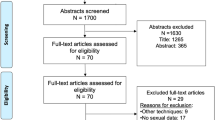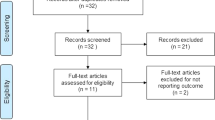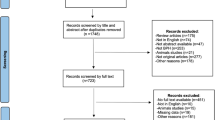Abstract
Background
Human ejaculation can be defined as a complex and still largely unknown function. Since decades, Benign Prostatic Hyperplasia (BPH) surgery-associated loss of antegrade ejaculation has been reported as a bother by many patients. New technologies and modified surgical techniques were developed, to reduce the impact of ejaculatory dysfunction on patients’ perceived quality of life. Recently, the emerging of the new Minimally Invasive Surgical Techniques (MISTs) empowered the urological surgeons with the technological means to introduce the ejaculation-sparing principles into everyday clinical practice.
Methods
Our paper was conceived as a state-of-the-art analysis about the anatomical and physiological premises of the human ejaculation and their clinical application in the field of ejaculation-sparing surgery for the treatment of Lower Urinary Tract Symptoms (LUTS). Moreover, we proposed an innovative physiological model for antegrade ejaculation.
Results
We analysed the elements of the “ejaculatory apparatus” from an anatomical point of view. We investigated the physio-pathological models of the human ejaculation, from the classical “combustion chamber” paradigm to the new evidences by which it could be overcome. Finally, we provided a synthetic literature review about the ejaculation-sparing techniques for BPH surgery. Particularly, we distinguished them between classical techniques, modified for ejaculation-preserving purposes, and the new MISTs, characterized by the introduction of new technologies and different treatment modalities.
Conclusions
Modified surgical techniques and new technologies opened new perspectives about human ejaculation. Previously established functional paradigms were questioned and overcome by recent clinical evidence. The new MISTs gained a prominent role in the process, opening a whole new era for BPH surgery.

This is a preview of subscription content, access via your institution
Access options
Subscribe to this journal
Receive 4 print issues and online access
$259.00 per year
only $64.75 per issue
Buy this article
- Purchase on Springer Link
- Instant access to full article PDF
Prices may be subject to local taxes which are calculated during checkout


Similar content being viewed by others
References
Sturch P, Woo HH, McNicholas T, Muir G. Ejaculatory dysfunction after treatment for lower urinary tract symptoms: Retrograde ejaculation or retrograde thinking? BJU Int. 2015;115:186–7.
Rowland D, McMahon CG, Abdo C, Chen J, Jannini E, Waldinger MD, et al. Disorders of orgasm and ejaculation in men. J Sex Med. 2010;7:1668–86.
Nguyen HT, Etzell J, Turek PJ. Normal human ejaculatory duct anatomy: A study of cadaveric and surgical specimens. J Urol. 1996;155:1639–42.
Huang J, Chan C-K, Yee S, Deng Y, Bai Y, Chan SC, et al. Global burden and temporal trends of lower urinary tract symptoms: a systematic review and meta-analysis. Prostate Cancer Prostatic Dis. 2022. https://doi.org/10.1038/s41391-022-00610-w
Lebdai S, Chevrot A, Doizi S, Pradere B, Delongchamps NB, Benchikh A, et al. Do patients have to choose between ejaculation and miction? A systematic review about ejaculation preservation technics for benign prostatic obstruction surgical treatment. World J Urol. 2019;37:299–308.
Sokolakis I, Pyrgidis N, Russo GI, Sountoulides P, Hatzichristodoulou G. Preserving ejaculation: A guide through the landscape of interventional and surgical options for benign prostatic obstruction. Eur Urol Focus. 2022;8:380–3.
Manfredi C, Arcaniolo D, Spatafora P, Crocerossa F, Fusco F, Verze P, et al. Emerging minimally invasive transurethral treatments for benign prostatic hyperplasia: a systematic review with meta-analysis of functional outcomes and description of complications. Minerva Urol Nephrol. 2022;74:389–99.
Cacciamani GE, Cuhna F, Tafuri A, Shakir A, Cocci A, Gill K, et al. Anterograde ejaculation preservation after endoscopic treatments in patients with bladder outlet obstruction: Systematic review and pooled-analysis of randomized clinical trials. Minerva Urol Nefrol. 2019;71:427–34.
McNeal JE. Regional morphology and pathology of the prostate. Am J Clin Pathol. 1968;49:347–57.
Selman SH. The McNeal prostate: A review. Urology. 2011;78:1224–8.
Tauber PF, Zaneveld LJD, Propping D, Schumacher GFB. Components of human split ejaculates. II. Enzymes and proteinase inhibitors. J Reprod Fertil. 1976;46:165–71.
Wein AJ, Kavoussi LR, Partin AW, Peters CA (eds). Campbell-Walsh Urology: 3-Volume. 11th edn. (Elsevier Health Sciences, Amsterdam, 2016).
McNeal JE. The prostate and prostatic urethra: A morphologic synthesis. J Urol. 1972;107:1008–16.
Mikolajczyk SD, Millar LS, Wang TJ, Rittenhouse HG, Wolfert RL, Marks LS, et al. “BPSA,” a specific molecular form of free prostate-specific antigen, is found predominantly in the transition zone of patients with nodular benign prostatic hyperplasia. Urology. 2000;55:41–45.
Isaacs JT. Prostatic structure and function in relation to the etiology of prostatic cancer. Prostate. 1983;4:351–66.
Marberger H. The Mechanisms of Ejaculation. In: Coutinho EM, Fuchs F, (eds). Physiology and Genetics of Reproduction: Part B. Boston, MA: Springer US; 1974. p. 99–110.
Lourenco T, Shaw M, Fraser C, MacLennan G, N’Dow J, Pickard R. The clinical effectiveness of transurethral incision of the prostate: A systematic review of randomised controlled trials. World J Urol. 2010;28:23–32.
Madersbacher S, Marberger M. Is transurethral resection of the prostate still justified? BJU Int. 1999;83:227–37.
El-Assmy A, ElShal AM, Mekkawy R, El-Kappany H, Ibrahiem EHI. Erectile and ejaculatory functions changes following bipolar versus monopolar transurethral resection of the prostate: a prospective randomized study. Int Urol Nephrol. 2018;50:1569–76.
Gil-Vernet JM Jr, Alvarez-Vijande R, Gil-Vernet A, Gil-Vernet JM. Ejaculation in men: A dynamic endorectal ultrasonographical study. Br J Urol. 1994;73:442–8.
Hermabessiere J, Guy L, Boiteux JP. Human ejaculation: Physiology, surgical conservation of ejaculation. Prog Urol. 1999;9:305–9.
Dorschner W, Stolzenburg JU. A new theory of micturition and urinary continence based on histomorphological studies. 5. The musculus ejaculatorius: a newly described structure responsible for seminal emission and ejaculation. Urol Int. 1994;53:34–37.
Alloussi SH, Lang C, Eichel R, Alloussi S. Ejaculation-preserving transurethral resection of prostate and bladder neck: Short- and long-term results of a new innovative resection technique. J Endourol. 2014;28:84–89.
Kini M, Te AE, Kashanian JA, Kaplan S, Chughtai B. Ejaculatory Hood-Sparing Photoselective Vaporization of the Prostate vs Bipolar Button Plasma Vaporization of the Prostate in the Surgical Management of Benign Prostatic Hyperplasia. J Endourol. 2020;34:322–9.
Abolazm AE, El-Hefnawy AS, Laymon M, Shehab-El-Din AB, Elshal AM. Ejaculatory Hood Sparing versus Standard Laser Photoselective Vaporization of the Prostate: Sexual and Urodynamic Assessment through a Double Blinded, Randomized Trial. J Urol. 2020;203:792–801.
Contreras PN, Bonanno N, Rios Pita H, Villasante N, Ameri C, Blas L. Antegrade Ejaculation Preservation Technique with GreenLight XPS 180-W: functional ejaculatory results. J Endourol. 2021;35:349–52.
Destefanis P, Sibona M, Soria F, Vercelli E, Vitiello F, Bosio A, et al. Ejaculation-sparing versus non-ejaculation-sparing anatomic GreenLight laser enucleo-vaporization of the prostate: first comparative study. World J Urol. 2021;39:3455–63.
Marra G, Sturch P, Oderda M, Tabatabaei S, Muir G, Gontero P. Systematic review of lower urinary tract symptoms/benign prostatic hyperplasia surgical treatments on men’s ejaculatory function: Time for a bespoke approach? Int J Urol. 2016;23:22–35.
Kim JK, Cho MC, Son H, Ku JH, Oh SJ, Paick JS. Patient perception of ejaculatory volume reduction after Holmium Laser Enucleation of the Prostate (HoLEP). Urology. 2017;99:142–7.
Elshal AM, El-Assmy A, Mekkawy R, Taha DE, El-Nahas AR, Laymon M, et al. Prospective controlled assessment of men’s sexual function changes following Holmium laser enucleation of the prostate for treatment of benign prostate hyperplasia. Int Urol Nephrol. 2017;49:1741–9.
Warwick RT. A urodynamic review of bladder outlet obstruction in the male and its clinical implications. Urol Clin North Am. 1979;6:171–92.
Katz PG, Greenstein A, Ratliff JE, Marks S, Guice J. Transurethral incision of the bladder neck and prostate. J Urol. 1990;144:694–6.
Porreca A, Bianchi FM, D’Agostino D, Sadini P, Romagnoli D, Del Rosso A, et al. Ejaculation sparing bladder neck incision with holmium laser in patients with urinary symptoms and small prostates: Short-term functional results. Urol Int. 2019;103:102–7.
Ronzoni G, De Vecchis M. Preservation of anterograde ejaculation after transurethral resection of both the prostate and bladder neck. Br J Urol. 1998;81:830–3.
Gul Z, Chughtai B, Te AE, Thomas D, Kaplan SA. Ejaculatory preserving middle lobe onl-transurethral resection and vaporization of the prostate: 12-year experience. Urology. 2019;134:199–202.
Leonardi R. Preliminary results on selective light vaporization with the side-firing 980 nm diode laser in benign prostatic hyperplasia: An ejaculation sparing technique. Prostate Cancer Prostatic Dis. 2009;12:277–80.
Gilling P, Barber N, Bidair M, Anderson P, Sutton M, Aho T, et al. WATER: A double-blind, randomized, controlled trial of Aquablation® vs transurethral resection of the prostate in benign prostatic hyperplasia. J Urol. 2018;199:1252–61.
Bach T, Giannakis I, Bachmann A, Fiori C, Gomez-Sancha F, Herrmann TRW, et al. Aquablation of the prostate: single-center results of a non-selected, consecutive patient cohort. World J Urol. 2019;37:1369–75.
Desai M, Bidair M, Zorn KC, Trainer A, Arther A, Kramolowsky E, et al. Aquablation for benign prostatic hyperplasia in large prostates (80–150 mL): 6-month results from the WATER II trial. BJU Int. 2019;124:321–8.
Alberto B, Richard N, Andrea G, Andrea S, Ivano V, Rodolfo H, et al. Impact on Sexual Function of Holmium Laser Enucleation Versus Transurethral Resection of the Prostate: Results of a Prospective, 2-Center, Randomized Trial. J Urol. 2006;175:1817–21.
Kim M, Song SH, Ku JH, Kim HJ, Paick JS. Pilot study of the clinical efficacy of ejaculatory hood sparing technique for ejaculation preservation in Holmium laser enucleation of the prostate. Int J Impot Res. 2015;27:20–24.
Trama F, Lauro GDI, Illiano E, Iacono F, Romis L, Mordente S, et al. Ejaculation Sparing Thulium Laser Enucleation of the Prostate: An Observational Prospective Study. J Clin Med. 2022;11:63–65.
Simone G, Misuraca L, Anceschi U, Minisola F, Ferriero M, Guaglianone S, et al. Urethra and Ejaculation Preserving Robot-assisted Simple Prostatectomy: Near-infrared Fluorescence Imaging-guided Madigan Technique. Eur Urol. 2019;75:492–7.
Gravas S, Cornu JN, Gacci M, Gratzke C, Herrmann TR, Mamomulakis C, et al. EAU: Guidelines on Male Lower Urinary Tract Symptoms (LUTS), including Benign Prostatic Obstruction (BPO). Eur. Assoc. Urol. 2022, 1–112.
Ornaghi PI, Porreca A, Sandri M, Sciarra A, Falsaperla M, Ludovico GM, et al. Features of patients referring to the outpatient office due to benign prostatic hyperplasia: analysis of a national prospective cohort of 5815 cases. Prostate Cancer Prostatic Dis. 2022. https://doi.org/10.1038/s41391-022-00575-w
Bolmsjö M, Wagrellt L, Hallin A, Eliasson T, Erlandsson BE, Mattiasson A. The heat is on -but how? A comparison of TUMT devices. Br J Urol. 1996;78:564–72.
Schulman CC, Zlotta AR. Transurethral needle ablation (TUNA): histopathological, radiological and clinical studies of a new office procedure for treatment of benign prostatic hyperplasia. Prog Clin Biol Res. 1994;386:479–86.
McVary KT, Gange SN, Gittelman MC, Goldberg KA, Patel K, Shore ND, et al. Minimally invasive prostate convective water vapor energy ablation: A multicenter, randomized, controlled study for the treatment of lower urinary tract symptoms secondary to benign prostatic hyperplasia. J Urol. 2016;195:1529–38.
de Rienzo G, Lorusso A, Minafra P, Zingarelli M, Papapicco G, Lucarelli G, et al. Transperineal interstitial laser ablation of the prostate, a novel option for minimally invasive treatment of benign prostatic obstruction. Eur Urol. 2021;80:95–103.
Pisco JM, Bilhim T, Costa NV, Torres D, Pisco J, Pinheiro LC, et al. Randomised Clinical Trial of Prostatic Artery Embolisation Versus a Sham Procedure for Benign Prostatic Hyperplasia. Eur Urol. 2020;77:354–62.
Cindolo L, Campobasso D, Conti E, Uricchio F, Franzoso F, Maruzzi D, et al. Do Patients Treated with Water Vapor Therapy and Meeting Randomized Clinical Trial Criteria Have Better Urinary and Sexual Outcomes Than an Unselected Cohort. J Endourol. 2022. https://doi.org/10.1089/end.2022.0637
Siena G, Sessa F, Cindolo L. Use of a Schelin Catheter for analgesia during Rezum treatment of the prostate. Prostate Cancer Prostatic Dis. 2023. https://www.nature.com/articles/s41391-023-00644-8
Sahakyan Y, Erman A, Bhojani N, Chughtai B, Zorn KC, Sander B, et al. Pharmacotherapy vs. minimally invasive therapies as initial therapy for moderate-to-severe benign prostatic hyperplasia: a cost-effectiveness study. Prostate Cancer Prostatic Dis. 2022. https://doi.org/10.1038/s41391-022-00561-2
Rieken M, Antunes-Lopes T, Geavlete B & Marcelissen T. What is new with sexual side effects after transurethral male lower urinary tract symptom surgery? Eur Urol Focus. 2018;4:43–45.
Roehrborn CG, Issa MM, Bruskewitz RC, Naslund MJ, Oesterling JE, Perez-marrero R, et al. Transurethral needle ablation for benign prostatic hyperplasia: 12-Month Results of a Prospective, Multicenter US Study. Urology. 1998;51:415–21.
Bruskewitz R, Issa MM, Roehrborn CG, Naslund MJ, Perez-Marrero R, Shumaker BP, et al. A prospective, randomized 1-year clinical trial comparing transurethral needle ablation to transurethral resection of the prostate for the treatment of symptomatic benign prostatic hyperplasia. J Urol. 1998;159:1588–94.
Cimentepe E, Unsal A, Saglam R. Randomized clinical trial comparing transurethral needle ablation with transurethral resection of the prostate for the treatment of benign prostatic hyperplasia: Results at 18 months. J Endourol. 2003;17:103–7.
Arai Y, Okubo K, Okada T, Maekawa S, Aoki Y, Maeda H. Interstitial laser coagulation for management of benign prostatic hyperplasia: A Japanese experience. J Urol. 1998;159:1961–5.
Arai Y, Ishitoya S, Okubo K, Suzuki Y. Transurethral interstitial laser coagulation for benign prostatic hyperplasia: Treatment outcome and quality of life. Br J Urol. 1996;78:93–98.
Schulze H, Martin W, Hoch P, Pannek J, Haupt G, Senge T. Transurethral ultrasound-guided laser-induced prostatectomy: Clinical outcome and data analysis. Urology. 1995;45:241–7.
Grise P, Plante M, Palmer J, Martinez-Sagarra J, Hernandez C, Schettini M, et al. Evaluation of the Transurethral Ethanol Ablation of the Prostate (TEAP) for symptomatic benign prostatic hyperplasia (bph): A european multi-center evaluation. Eur Urol. 2004;46:496–502.
Campobasso D, Siena G, Chiodini P, Conti E, Franzoso F, Maruzzi D, et al. Composite urinary and sexual outcomes after Rezum: an analysis of predictive factors from an Italian multi-centric study. Prostate Cancer Prostatic Dis. 2022. https://doi.org/10.1038/s41391-022-00587-6
Roehrborn CG, Gange SN, Shore ND, Giddens JL, Bolton DM, Cowan BE, et al. The prostatic urethral lift for the treatment of lower urinary tract symptoms associated with prostate enlargement due to benign prostatic hyperplasia: The L.I.F.T. study. J Urol. 2013;190:2161–7.
Woo HH, Huang CP, Huang WJ, Chang YH, Lien CS, Chkhotua A, et al. The EXPANDER-1 trial: Introduction of the novel UrocrossTM Expander System for treatment of lower urinary tract symptoms (LUTS) secondary to benign prostatic hyperplasia (BPH). Prostate Cancer Prostatic Dis. 2022;25:576–82.
Kaplan SA, Pichardo M, Rijo E, Espino G, Lay RR, Estrella R. One-year outcomes after treatment with a drug-coated balloon catheter system for lower urinary tract symptoms related to benign prostatic hyperplasia. Prostate Cancer Prostatic Dis. 2021;24:1073–9.
Roehrborn CG, Chin PT, Woo HH. The UroLift implant: mechanism behind rapid and durable relief from prostatic obstruction. Prostate Cancer Prostatic Dis. 2022;25:79–85.
Carnevale FC, Iscaife A, Yoshinaga EM, Moreira AM, Antunes AA, Srougi M. Transurethral Resection of the Prostate (TURP) Versus Original and PErFecTED Prostate Artery Embolization (PAE) Due to Benign Prostatic Hyperplasia (BPH): Preliminary Results of a Single Center, Prospective, Urodynamic-Controlled Analysis. Cardiovasc Interv Radio. 2016;39:44–52.
Al Rawashdah SF, Pastore AL, Velotti G, Fuschi A, Capone L, Suraci PP, et al. Sexual and functional outcomes of prostate artery embolisation: A prospective long-term follow-up, large cohort study. Int J Clin Pr. 2020;74:0–3.
Huang MM, Winoker JS, Matlaga BR, Allaf ME, Koo K. Evidence-based analysis of online consumer information about prostate artery embolization for benign prostatic hyperplasia. Prostate Cancer Prostatic Dis. 2021;24:106–13.
Ferré-Dolcet L, Frigotto L, Contiero B, Bedin S, Romagnoli S. Prostatic fluid composition and semen quality in dogs with benign prostatic hyperplasia undergoing treatment with osaterone acetate. Reprod Domest Anim. 2022;57:72–79.
Senkul T, Narin Y, Iseri C, Sen B, Karademir K, Erden D. Seminal plasma prostate-specific antigen level in benign prostatic hyperplasia. Urol Int. 2004;72:332–4.
Penna G, Mondaini N, Amuchastegui S, Degli S, Carini M, Giubilei G, et al. Seminal plasma cytokines and chemokines in prostate inflammation: Interleukin 8 as a Predictive Biomarker in Chronic Prostatitis / Chronic Pelvic Pain Syndrome and Benign Prostatic Hyperplasia. Eur Urol. 2007;51:524–33.
Utleg AG, Yi EC, Xie T, Shannon P, White JT, Goodlett DR, et al. Proteomic analysis of human prostasomes. Prostate. 2003;56:150–61.
Author information
Authors and Affiliations
Contributions
MS: bibliographic research and manuscript writing; PD: manuscript writing and revision; EV: manuscript editing and image creation; SS: manuscript editing; PG: manuscript writing and revision; LC: bibliographic research, manuscript writing and revision.
Corresponding author
Ethics declarations
Ethical approval
This review article was conducted accordingly to the Declaration of Helsinki about clinical studies on human subjects.
Competing interests
The authors declare no competing interests.
Additional information
Publisher’s note Springer Nature remains neutral with regard to jurisdictional claims in published maps and institutional affiliations.
Rights and permissions
Springer Nature or its licensor (e.g. a society or other partner) holds exclusive rights to this article under a publishing agreement with the author(s) or other rightsholder(s); author self-archiving of the accepted manuscript version of this article is solely governed by the terms of such publishing agreement and applicable law.
About this article
Cite this article
Sibona, M., Destefanis, P., Vercelli, E. et al. Ejaculation physiology and dysfunction after BPH surgery: the role of the new MISTs. Prostate Cancer Prostatic Dis 26, 475–482 (2023). https://doi.org/10.1038/s41391-023-00686-y
Received:
Revised:
Accepted:
Published:
Issue Date:
DOI: https://doi.org/10.1038/s41391-023-00686-y
This article is cited by
-
The times have changed. Let the urologists change!
Prostate Cancer and Prostatic Diseases (2024)
-
Ejaculation sparing of classic and minimally invasive surgical treatments of LUTS/BPH
Prostate Cancer and Prostatic Diseases (2024)
-
Trans - Perineal laser ablation of the prostate in high surgical risk patients affected by severe lower urinary tract symptoms related to benign prostatic obstruction
Prostate Cancer and Prostatic Diseases (2023)



